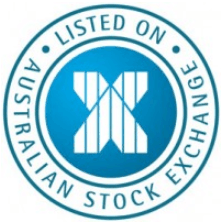
Stan Shamu for Chris Weston, Chief Market Strategist at IG Markets
Asia has picked up the positive leads from European and US trade and rallied, with equities erasing some of the recent sharp falls. The rally in global markets began in European trade as investors reacted to reports the ECB is looking to add corporate bond purchases to the covered bond purchases it commenced this week. Markets saw this as a move closer to full-blown QE, and peripheral bonds rallied as a result – the IBEX and MIB outperformed the DAX and CAC.
The market would really want to see government bonds and high-quality private debt included in a broad-based asset purchase program. Essentially, if the ECB is to increase its balance sheet to 2012 levels (around €3 trillion; an extra trillion euros from current levels), then we need to see the range of instruments open to the ECB increase significantly. Corporate debt issuance by European residents is huge.
Euro weakness likely to persist
Perhaps the recent poor run in German economic data has finally forced Germany’s hand on the matter, as in the past markets assumed Germany will not budge. While this remains the great unknown, price action has already started to reflect the optimism and the single currency fell on this speculation.
EUR/USD dropped from a high of $1.284 down to $1.271, where it is currently trading. With the market feeling the latest development is a potential stepping stone to buying government debt, a retest of October lows in the $1.2500 region is a real possibility.
Ahead of the European open, we are eyeing further gains yet again, with limited releases on the calendar to work from. On the UK side, though, we have BoE minutes. No change is expected in the asset purchase facility and official bank rate votes.
Japan bounces back from yesterday’s losses
Looking around the region, there are solid gains all round – the panic that had set in last week is seemingly a thing of the past. Japan is leading the region after reversing yesterday’s losses. These were centred around speculation about the government pension investment fund (GPIF) equities allocation.
With GPIF talk out of the way for now, investors focused on trade balance figures, which showed Japan’s exports had accelerated, most likely supported by a weaker yen. As global growth remains a key issue, some are speculating Japan will have to reconsider the second leg of its sales tax hike and the need for further potential stimulus.
At the same time, investors are debating what yesterday’s better-than-expected GDP reading means for China. While many feel this reduces the need for stimulus, I actually think it’s comforting to get a better than expected reading. This will perhaps encourage officials to still reach for the 7.5% growth target, as opposed to abandoning it completely.
China is more likely to continue with targeted stimulus measures and, if growth hasn’t completely been derailed by now, there is still a good chance the current measures will suffice. Additionally, industrial production rebounded significantly and this is likely to be reflected in overall activity levels. The real concern remains the property market, where prices continue to struggle.
ASX 200 streak continues
The ASX 200 has now posted its seventh consecutive positive sessions and almost retraced 50% of the drop from August-to-October lows. The level comes in around 5397 and there is a significant congestion zone. This could lead to some consolidation.
Perhaps the most notable release has been Australia’s Q3 CPI data, which remained broadly consistent with the RBA’s target band. The headline figures were bang in line with expectations but the trimmed mean figures fell slightly short. Headline CPI showed growth slightly ahead at 0.5% quarter-on-quarter and 2.3% year-on-year.
The trimmed figures missed estimates. CPI was up 0.4% quarter-on-quarter (vs 0.5% expected) and 2.5% year-on-year (vs 2.7% expected). While the initial reaction in the local currency was negative, it wasn’t long before investors realised the minimal impact this would have on policy and decided to focus on global macro factors instead.